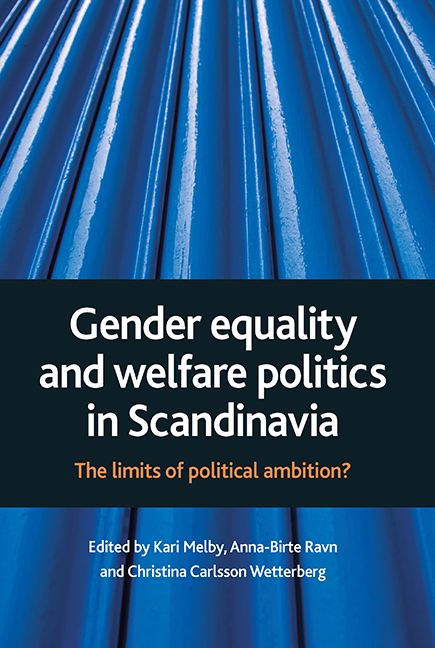Book contents
- Frontmatter
- Contents
- List of tables
- Preface
- Notes on contributors
- A Nordic model of gender equality? Introduction
- Part One Meanings of gender equality in Scandinavian welfare policy
- Part Two Current challenges: competing discourses on gender equality
- Postscript Gender, citizenship and social justice in the Nordic welfare states: a view from the outside
- Postscript Future research on gender equality in the Scandinavian countries
- Appendix Tables 1-10
- Index
two - The claim of economic citizenship: the concept of equality in a historical context
Published online by Cambridge University Press: 21 January 2022
- Frontmatter
- Contents
- List of tables
- Preface
- Notes on contributors
- A Nordic model of gender equality? Introduction
- Part One Meanings of gender equality in Scandinavian welfare policy
- Part Two Current challenges: competing discourses on gender equality
- Postscript Gender, citizenship and social justice in the Nordic welfare states: a view from the outside
- Postscript Future research on gender equality in the Scandinavian countries
- Appendix Tables 1-10
- Index
Summary
In the beginning of the 20th century, marriage legislation was reformed in all the Nordic countries. Male privileges were abolished and equality was declared. Some changes in the old marriage laws had been accomplished already at the end of the 19th century, especially in Denmark and Norway, where the wives had attained their majority. Married women in all the countries had also been given the right to dispose of their own private property and income, but husbands maintained complete disposal of the common estate, as well as custody of the children. All this was changed during the reform process that followed, starting in 1909 in Norway and ending during the 1920s (see Appendix, Tables 1 and 2). This early introduction of basic equality between spouses was in contrast to the situation in the rest of Europe, where it was not until the 1960s that similar legislation began to take shape (Bradley, 1996; Melby et al, 2000). This makes it relevant to talk about a Nordic model of marriage. But there were also significant differences between the Nordic countries. This chapter compares how the reform was justified ideologically and how it was designed in Norway and Sweden respectively, highlighting similarities as well as differences. The focus will be on questions regarding economic equality and equality in relation to the custody of children. Our point of departure is the widely held assumption in research that Norwegian policy, much more than its Swedish counterpart, has been and still is framed by a housewife ideology and rhetoric of gender difference (Sainsbury, 2001; Borchorst et al, 1999; Haavet, 1999). Is this seen also in the marriage reform, and if so, what do the differences mean in terms of equality?
Equality now and then
What is striking in the marriage-reform process in the Nordic countries is the very strong emphasis on equality in the motivations and discussions. But it is important to notice that equality meant something else at that time than it does today. From the beginning of the century, a norm saying that married women's primary duty was to take care of the home and the children while husbands supported the family through their work received increased support in society. When equality was claimed in the context of marriage reform it was, openly or not, usually based on the assumption of this kind of gendered division of labour.
- Type
- Chapter
- Information
- Gender Equality and Welfare Politics in ScandinaviaThe Limits of Political Ambition?, pp. 43 - 62Publisher: Bristol University PressPrint publication year: 2008
- 1
- Cited by



